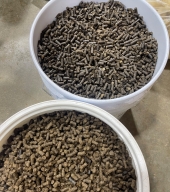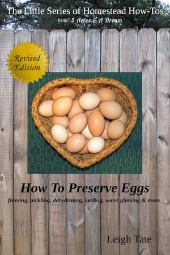


Arthur Wierzchos wrote:
I was trying to offer permaculture zero waste ideas and alternatives, rather than just throwing something useful away into the forest, but apparently this kind of stuff seems crazy to some people. Opposite sides of the eco-scale, I suppose.


Carla Burke wrote:Excellent information, E! Thank you!
I do have another question, though. I saw in another thread that it's great for sandy soils, but what about clay soil? Mine is heavy, red clay, with tons of rocks in many sizes (I'm in the Missouri Ozarks). I've all but given up on ever having good soil for planting directly into the ground, in favor of raised beds, for most of my planting. But, some things don't lend themselves well to raised beds and containers - like trees or even bushes. Would the pellets turn my clay into soil deeply enough, simple turning, but without tilling, to plant things like hazelnuts or blueberries, within say a year or two? If there's even a chance of that, how much of the pellets would you recommend for improving say, a 3ftx3ft spot, for a single, medium to large bush (like a hazel or blueberry)?

Carla Burke wrote:I've known for some time, about using wool (particularly the skirted portions) in compost, but haven't done it, because unless the time is taken to cut it up finely, it can be difficult to turn the compost. So, it would, at least theoretically, be much less labor intensive to simply put it directly into the garden. But, I've seen just how long it can take to break down the fibers, done that way. Do the pellets break down and become accessible to the plants substantially faster, or is it just the other matter that was trapped in the matted fibers that breaks down, faster, and the actual wool still breaks down fairly slowly? I guess what I'm actually asking is do the pellets act like a time-release fertilizer? Or, because they're pelletized, do they break down at a more even rate?

Derek Thille wrote:Welcome Ethan! Your operation seems to have a lot of similarity to Anna from Longway Homestead here in Manitoba. In addition to pellets and other sheepish products, they do workshops on natural dyes.
A neighbour of Anna partnered with her this year and created small cubes of wool batting (I think) to use for plant starting (an alternative to peat pots). It's a neat idea but I start too many seeds for that to be economical for us.
Other hair was mentioned in another post...our standard poodle makes a lot of that. We have a bag that I'll be taking out to the acreage soon. Some will be used in compost, some left out and about for birds to use in nesting, and some will get buried in a hugelkultur I'll be building this spring.
Jay Angler wrote:I just asked a bunch of questions here: https://permies.com/t/278058/people-growing-toilet-paper-Plectranthus#2921507
About plant alternatives to toilet paper.
Since the wool is biodegradable, would it work in a Willow Feeder/ bucket compost system as a butt wipe?
Would it be practical and comfy, or yucky and useless?
I don't have an easy source, so no way to test it, but I expect there are some permies out there that do.
Wojciech Majda wrote:Hi guys, I am planning to add a minimal quantity of gypsum to my pig feed, so it will be fermenting with extra calcium and sulfur. In theory, it should provide bacteria with extra sulfur, so the cystein and methionine content should be higher...
Let me know what you think about it!
